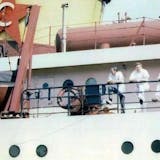Three south metro cities are making expensive changes to deal with elevated radium in their water supply after receiving notice that their levels are above what the state and federal government allow.
In South St. Paul, Savage and Inver Grove Heights, city officials are using different strategies to reduce levels of the naturally occurring carcinogen, from building a new water treatment plant to buying more water from a neighboring city.
“We tend to find [radium] in the deepest and oldest aquifers in Minnesota,” said Karla Peterson, supervisor of the Minnesota Department of Health’s (MDH) community public water supply unit, adding that those include the Mount Simon and Jordan aquifers.
In Minnesota, radium can be found in bedrock as far northeast as Hinckley and as far southwest as Carver County, she said, and in the water supply of some cities along the Wisconsin border, like Winona. The “maximum contaminant level” is 5.4 picoCuries (pCi) per liter and water above that level requires treatment; a picoCurie is a measure of radioactivity. According to the Department of Health, everyone is exposed to radiation in daily life. But a person has a higher risk of getting cancer if they drink water with radium in it every day for many years.
Peterson said when the U.S. Environmental Protection Agency initially set allowable radium levels in 2000, most cities with violations were identifying radium in their water supply for the first time.
“As time has gone on ... aging infrastructure has been the primary reason for exceedances,” she said, adding that filters and other equipment needs replacement every 20 years or so.
Between 2020 and 2023, about 10 public water systems per year in Minnesota have received violations for too-high radium levels, according to Department of Health data. Almost all are in small cities outside the metro. Rural cities have different challenges — both financial and managerial — to comply with state requirements than a metro-area city may have, Peterson said.
Inver Grove Heights and Savage were the only metro cities to see violations since 2020. Elevated radium levels were also found in the water system at Skyline Village, a manufactured home community in Inver Grove Heights, in 2021, 2022 and 2023.


